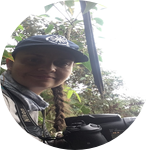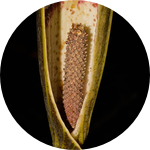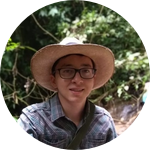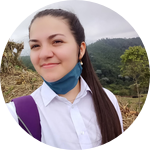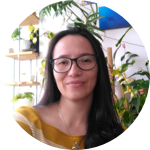About This Project
Anthurium scandens, the most widely distributed Anthurium species, is considered as a species complex. Nevertheless, the morphological characters traditionally used for taxonomic distinction do not allow a correct identification, being confused with its sister species Anthurium obtusum. In order to give a solution to this problem an anatomical analysis will be carried out. The results will be the basis for ecological and conservation studies of these epiphytic plants.
Ask the Scientists
Join The DiscussionWhat is the context of this research?
The plants that grow above other plants are called epiphytes. Epiphytes can represent up to a third of plant species in a forest, where anthuriums contribute a significant number. Anthurium scandens, the most widely distributed species of the genus, is currently considered as a species complex. Further, although genetic studies support the differences between Anthurium scandens and Anthurium obtusum, these species are often confused because its similar external morphology. Therefore, the aim of this study is providing an appreciation from an anatomical approach, in this case of the leaves, that strengthens the taxonomic distinction between these two species and contribute to the solution of Anthurium scandens complex.
*For more references see Additional Info
What is the significance of this project?
Colombia has been considered the richest area in species of the family Araceae, and the second country with the largest number of plant species in the world. For that reason, clarify the taxonomy status of Anthurium scandens, the genus species with more records (in the world), will help to understand of the biological richness of this genus in Colombia and will give a starting point for ecological and conservation studies that allow a sustainable use of these beautiful plants as ornamentals.
What are the goals of the project?
We will collect and evaluate individuals of at least three localities from each species, where each plant will be acclimatized under greenhouse conditions. Due the epiphytic habit representing a highly dynamic environment, it is necessary to standardize the environmental conditions for anatomical comparison. Consequently, we believe that with the correct acclimatization it will be possible to determine those anatomical features characteristic of species. That is, we will be able to establish anatomical characters of taxonomic importance to species identification.
Budget
We will use the funding collected for (1) travel expenses where we'll search and identify the Anthurium scandens and A. obtusum individuals that will be acclimatized. (2) Purchase of sensors to measure temperature, humidity, and luminosity during the acclimatization. (3) Purchase of reagents and implements to perform the anatomical analysis of these leaves in the lab.
See Additional Info to know the incentives based on how much you donate.
Endorsed by
 Project Timeline
Project Timeline
The project is planned for a duration of twelve months, divided in four main milestones: First, individuals from natural populations will be identified and collected. Then, the acclimatization of plants will be carried out. And subsequently, new mature leaves will be analyzed anatomically. Finally, we will write a manuscript and report the totality of our findings to backers, exposing the results obtained in the project.
Aug 31, 2022
Project launched
Sep 01, 2022
Project Launched
Oct 31, 2022
Travel and identification of natural populations
Dec 31, 2022
Collection of individuals
Feb 28, 2023
Acclimatization of plants in greenhouse
Meet the Team
Affiliates
Team Bio
We belong to the Semillero de investigación en Plantas y Afines (PHYTOS), where one of our favourite group is the Araceae and based on them is our research, creating questions like: Are there complex of species in the family? Could we use anatomical data to solve this complex? How is the epiphyte habit related with leaf anatomy?, through this project we aim to solve some of these biological questions.
David Gutierrez Duque
I live in Colombia in a city above the Andes mountains called Manizales. I always knew that what I want to dedicate my life studying is everything related to life, so I enrolled into Biology. I've represented Colombia in the American Science Junior Olympiad and the International Biology Olympiad.
Early in my career I realize that one of the most amazing beings to study are plants. I love everything about them, and I am looking for how, based on its taxonomy, anatomy and genetics, to give real solutions to its conservation.
Ana Lucia Cortés Loaiza
I am a biology student at the University of Caldas in Manizales, Colombia. For as long as I can remember, I have been fascinated by the natural world, especially biodiversity, evolution of species, genetics and systematics. Now in my time at the university I have realized how important research in the area of natural sciences is to know and understand many things that are in front of our eyes and we do not give them the importance they deserve. This is why I want to start my career in research and contribute new scientific knowledge to society.
Jessica Alejandra Prieto Luna
I am from Colombia and I live in two municipalities La Dorada and Manizales. Since my childhood I was taught the importance of the environment and I took a lot of love to nature. I belonged to the environmental group of my school, I studied a Technologist in Natural Resources Management, I did an internship in a Pastoral where we worked with children and peasant communities, relating our environmental knowledge and their own knowledge, and I participated in urban environmental awareness projects.
Currently, I am studying Biology and with what I have learned it is clear to me that I can generate more positive impacts to the environment with the development of new scientific knowledge. And one of my favorite fields is botany, especially plant care and anatomy.
Ghennie Tatiana Rodriguez Rey
I am a professor of Department of Biological Sciences at University of Caldas, Colombia, and advisor for this research. I hold a Ph.D. in Biological Sciencies from the UERJ, Brazil (2014) and experience in the area of evolutionary biology, acting mainly in the fields of phylogeny, phylogeography and population genetics. Moreover, I am affiliated with the research group on biodiversity and natural resources (BIONAT).
Additional Information
Incentives:
If you donate 1+ dollar
Your name will appear in the acknowledgment section of our web page *
If you donate 10+ dollars
You will receive a 10 x 15 cm thank-you card with a photo of the species and a personalized message (PDF format) *
If you donate 20+ dollars
You can assist to a talk about the results of the project **
If you donate 50+ dollars
You will receive a 51 x 61 cm poster with photos, interesting facts, descriptions and tips for both species (PDF format) **
If we reach the target...
For every $35 more we will analyze one additional individual
* Three months after the project has started
** Three months after the project has finished
Additional references:
Carlsen, M.M. & Croat, T.B. (2013). A Molecular Phylogeny of the Species-Rich Neotropical Genus Anthurium (Araceae) Based on Combined Chloroplast and Nuclear DNA. Systematic Botany 38(3) : 576-588
Croat, T.B. (1983). A Revision of the Genus Anthurium (Araceae) of Mexico and Central America. Part I: Mexico and Middle America. Annals of the Missouri Botanical Garden 70, no. 2: 211–416.
Croat, T.B. (1986). A Revision of the Genus Anthurium (Araceae) of Mexico and Central America, Part 2: Panama. Monographs in Systematic Botany from the Missouri Botanical Garden 14.
French, J.C. (1997). Vegetative anatomy. In: Mayo, S.J.; Bogner, J.; Boyce, P.C. eds. The Genera of Araceae. Royal Botanic Gardens, Kew.
Grayum, M.H.; Hammel, B.E.; Herrera, C. & Zamoro-Villalobos, N. (2003). Manual de Plantas de Costa Rica. (Eds.). Volumen 1. Missouri Botanical Garden. St. Louis, Mo.
Project Backers
- 7Backers
- 8%Funded
- $76Total Donations
- $10.86Average Donation
